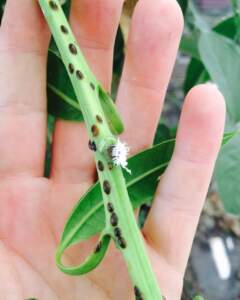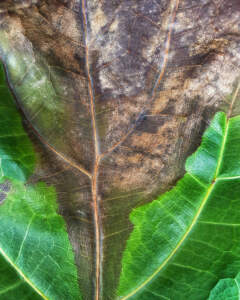Have you heard of a Fiddle Leaf Fig? What about a Ficus Lyrata?
If you’re unfamiliar with these names, you’re not alone! They ARE one and the same incredibly popular plant.
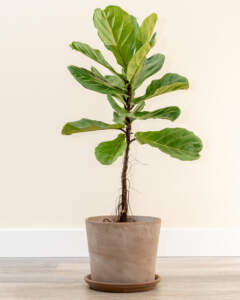
Even if you didn’t know their proper name, we’re betting you’ve actually seen a Fiddle Leaf in friends’ homes, in malls – all over. In fact, if you’ve watched any interior design shows lately, you may have seen them featured in an episode or two. For example, Joanna Gaines of Fixer Upper fame uses them frequently in her homescapes. Read on, and you’ll learn everything you need to know to properly care for your Fiddle Leaf, indoors or out.
Light Requirements
Bright light is important to the Fiddle Leaf, but you don’t want the lighting to be too harsh. Place it in a spot that gets as much indirect light as possible. Direct sunlight (especially midday sun) may burn its leaves. Of course, natural light is always better than artificial light. Insufficient light is harmful, too. And, make sure to rotate the plant a bit throughout the month. If you don’t give it a little turn every so often, you’ll see the plant start to lean closer to the light.
Soil
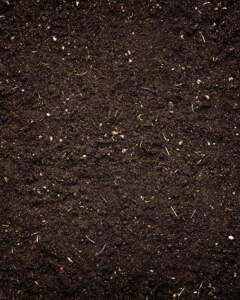
The soil you use should provide plenty of drainage. Select something with bark or perlite for optimum water retention and flow. Choosing thin soil or soil with no pieces in it allows water to flow through too quickly. Soil that’s too thick can cause water to sit, which could result in root rot. Our PlantVine Organic Indoor Soil is perfect for Fiddle Leaf Figs >
Humidity
A room’s normal humidity will generally be just fine to keep your plant healthy. During winter months – when and if you turn on the heat – you may need to increase the room’s humidity to ensure the plant is getting the right levels of moisture and oxygen.
Repotting
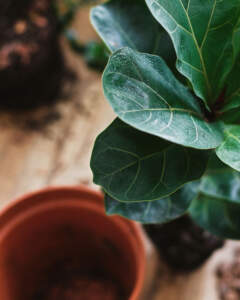
The Fiddle Leaf Fig is a fast grower, so you’ll probably have to repot it every so often. How will you know when the time is right? Repotting should happen when the roots start to break through the bottom of the pot. During its early years in your home, you may need to repot it every year during the spring. When it’s time, choose a pot that’s just a few inches larger. Don’t go too big! Click here to read more on repotting >>
Cleaning Leaves
The Fiddle Leaf Fig’s leaves are quite large. Monitor them for dust to make sure they stay clean. Dust on the leaves may affect light absorption. Use a soft damp cloth to remove the dust from your plant. Please do not use any type of cleaner, just a soft cloth slightly dampened with water.
Issues to Watch For:

Pests on Plants PESTS: The Fiddle Leaf can attract mealy bugs. These pests pull the sap from the plant, thus stunting its growth. They also release sugar over the plant, which could lead to mold or attracting other kinds of pests. A bit of water sprayed over the leaves gets the job done for indoor plants. Outdoors, you may want to introduce a natural predator, like ladybugs. You can also try a moderate amount of insecticide spray.
- WATERING ISSUES: Overwatering is more detrimental than underwatering. Simply water when you notice the soil on top drying out. Surprisingly, more houseplants fail from overwatering than any other cause. Soggy soil means the necessary oxygen cannot reach the roots. Don’t kill your plant with kindness! Remember to water less frequently in the winter months.You may want to use rainwater on your plants – if the air quality in your neighborhood is good. Well water can sometimes be too alkaline for acid-loving houseplants. Bottled water is excellent, but way too expensive. Chlorinated water does NOT damage house plants. Avoid softened water, which contains salt. Smart gardeners actually fill their watering can after each watering session, and let it sit until the next time. In this way, water reaches the correct temperature. And, here’s a little known tip: water in the morning if possible. This allows the plant to dry out during the day.
- LOSS OF LEAVES: If your plant starts to lose leaves, there are several reasons. Perhaps the plant is not getting enough water; or the humidity is not right. Cold air could also be the culprit. But be assured, some leaf loss is normal. The plant naturally sheds leaves from the bottom as its stalk grows.
- BROWN SPOTS: While a few small brown spots can be normal, you need to be proactive when you see these. Look closely at your plant to see:1. Are the brown spots starting at the edge or the center of the leaf?
2. Are the spots very dark brown (almost black) or lighter in color?
3. Are there many spots on each leaf, or just one large brown area?
4. Are the brown spots resulting in the leaves falling off?
5. Are the spots affecting older leaves near the plant’s bottom, or younger new leaves near the top?
“The most common cause of brown leaves is due to a fungal infection from roots sitting in too much moisture. “ The most common cause of brown leaves is due to a fungal infection from roots sitting in too much moisture. The Fiddle Leaf’s roots need to dry slightly between watering. Remove the plant from the pot and inspect the roots. If they are brown and mushy, remove the damaged roots and repot your plant using fast-draining potting soil. Make sure to stop overwatering. Remember, root rot tends to affect older leaves first. You can also use a moisture meter.
Bacterial infections can be a tough problem to fight. How to spot them? Bacterial brown spots are less black and browner in color. And, they attack all areas of the plant. Bacteria causes many brown spots per leaf – not just in one area. These spots will have irregular margins. Bacterial leaf spot prefers feeding on new growth, so if your newer leaves are worse off than your older leaves, bacterial leaf spot is likely to blame. Another telltale sign is a yellowing of the leaves in addition to the brown spots. If the damage is not severe, cut off the affected leaves, and repot your plant with fresh, sterile soil in a container with good drainage. Give it plenty of light and go easy on the watering. You may want to put your plant outside to help it recover. Fresh air, plenty of indirect light and warm conditions can help your plant recover.
Dry brown spots are easier to diagnose, as they have dry tan or lighter brown areas that start at the leaf’s edge and cause the leaf to curl. Your plant may look wilted or dry, and the soil may have receded from the pot. Soil shrinkage is a dead giveaway of dryness. Water regularly (try once per week). You can also try misting every one to three days, or use a humidifier near your plant.Small dark spots that damage leaves (especially new leaves) and turn into holes is a sign of insect damage. Take your plant outside and spray with Neem oil. Spray all the leaves thoroughly – including the underside. Wait two weeks, inspect again, and respray if needed.
Hidden (And Not So Hidden) Dangers
If you have pets, it’s important to keep them far away from the Fiddle Leaf, which can be highly toxic for cats, dogs and horses.
The Importance of Pruning
Pruning the top of the plant is your way to ensure the Fiddle Leaf will stay at your desired height. Pruning allows the plant to continue growing outward and upward.
Fertilizer
During the growing seasons, (throughout the spring and summer), you’ll want to fertilize your plant every month. In the winter, skip this step, as the plant tends to really slow its growth during colder times of the year.
Temperature
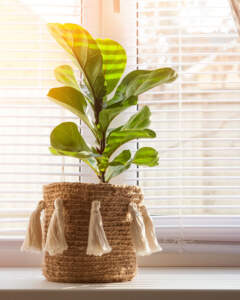
The temperature around your plant should be between 60°F and 75°F. If you live in an area where the temperature falls below 55°F, you may want to look for a different type of plant for your outdoor landscaping.
If you’re thinking about getting a Fiddle Leaf, you’ll need to pay attention to the care suggestions we’ve outlined here. Then, before you know it, you’ll have a great looking plant that adds so much to your home. With minimum care, you’ll get maximum pleasure.

